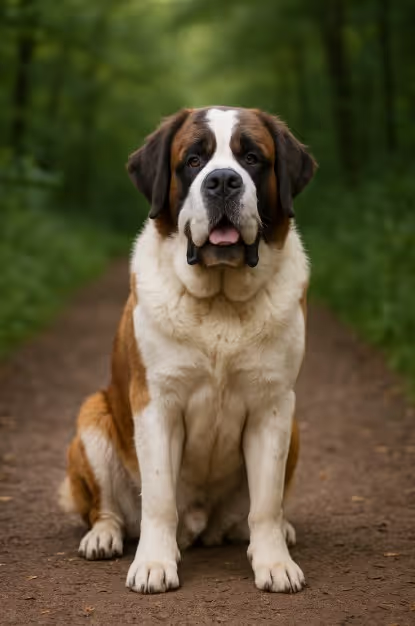The Saint Bernard is a giant, gentle, and affectionate working breed famous for its rescue work in the Swiss Alps. Known for its calm demeanor, loyalty, and impressive size, the Saint Bernard makes a devoted family companion for those with space to accommodate this massive yet loving dog. They are patient with children, protective of their families, and happiest in homes where they can be part of daily life.

The Saint Bernard’s origins date back to the 11th century, when monks at the Great St. Bernard Hospice in the Swiss Alps bred large working dogs for rescue, guarding, and companionship. These dogs became renowned for saving lost travelers trapped in snowstorms and avalanches. The breed is descended from large farm dogs of the Alps, possibly crossed with Mastiff-type dogs brought by the Romans. Modern Saint Bernards are celebrated worldwide for their gentle temperament, though they are more often family companions than alpine rescuers today.
A massive, powerful dog with a noble, expressive face.
Moderate grooming needs depending on coat type.
Moderate exercise needs for their size.
Gentle giants that respond well to patient, positive training.
Balanced diet tailored for giant breeds.
Prone to several large-breed health issues.
Widely available through breeders and giant breed rescues.
Are Saint Bernards good family dogs?
Yes, they are gentle, affectionate, and patient with children.
Do they bark a lot?
No, they are generally quiet unless alerting to something unusual.
Do they shed much?
Yes, especially during seasonal shedding periods.
Are they easy to train?
Yes, with gentle, consistent methods.
Do they get along with other pets?
Yes, they are typically friendly and tolerant.
Are they hypoallergenic?
No.
How much exercise do they need?
About 30–60 minutes daily.